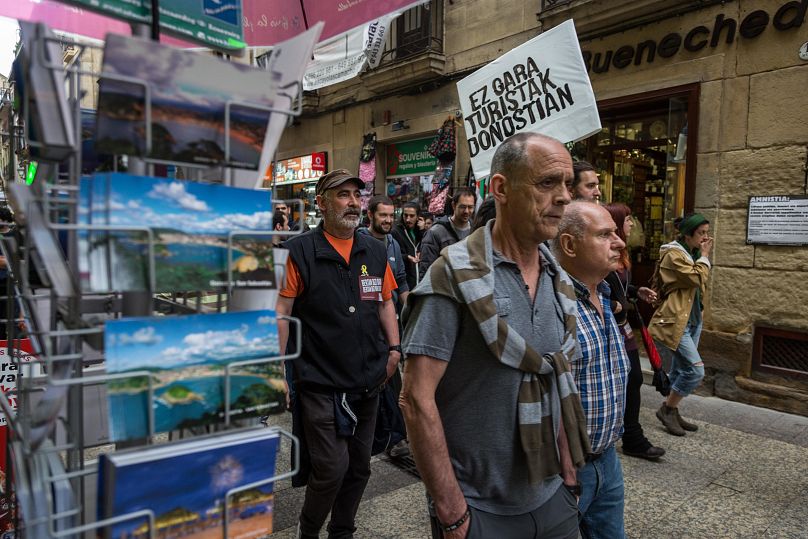Feeling like tourists in their own city, locals in the Basque Country protest against the overcrowding of tourism, which has forced them out of their homes and into the surrounding villages.
The demonstration called by the Bizilagunekin platform ("With the neighbours" in the Basque language) began around 18:30 in the afternoon, passing in front of the Kursaal conference centre, where the World Tourism Organisation (WTO) held its 108th meeting of the Advisory Council this week.
Several weeks after its creation, the Bizilagunekin platform made itself known in the city's locals and protested in the streets of San Sebastian to express its dissatisfaction with the WTO visit and with the management of tourism by the city council.
The platform is part of the Southern European Cities Network for Tourism, made up of cities such as Barcelona, Venice, and Lisbon, among others.
La Pate Vieja, the old part of the city, has an international reputation for its Basque cuisine, among other delights. It is also the area hardest hit by tourism. San Sebastian's City Council calls it a "saturated tourism area. " Around 5,000 residents live there and the choice of 1,600 beds available is divided between tourist flats, pensioner homes, and hotels, of which 3 are under construction.
"I am a neighbour of La Parte Vieja, but it is impossible to live there because of the price increase," says Markel Ormazabal, a sociologist and spokesman for Bizilagunekin. "Out of 12 friends, only 3 of us can live in the city, thanks to the fact that we had family flats. The rest of my friends, due of the prices, have had to leave and live in the surrounding villages."
The Neighbourhood Association estimates that about 500 people have stopped living in this area in the last year. "The problem is not only the increase in the price of housing but also the cost of tourism. Even the grocery stores, which have been there for decades, are beginning to cater to tourist demands and have raised their prices.
A new municipal bylaw to regulate tourist apartments in San Sebastian was approved a few months ago, despite opposition parties voting against it. With its implementation, the municipality plans to "half" the number of apartments currently used for tourism. However, Ormazabal and the platform are critical of the new bylaw:
"What they've done with the tourist flats is spread the word. If most of them were in the Old Town, they will now spread to the surrounding neighborhoods, expanding the problem to the whole city.
With shouts of "we don't want to be tourists in San Sebastian", hundreds of protesters walked past the souvenir shops and taverns in the Old Town, often frequented by numerous tourists. Several demonstrators also unfurled a banner at the top of a building, which called for the end of hotels under construction.
"We are not against tourists or people who come to visit the city," said a demonstrator pointing to the bars, "we are against the overcrowding of tourism and what it means for those of us who live here."
The first protests against tourist overcrowding started last year in several Spanish cities, such as Barcelona, Palma de Mallorca, and San Sebastian.
The Basque city, which has around 185,000 inhabitants, was visited by more than two million tourists last year. Just five years ago, the number of tourists was half that.
San Sebastian has become the fourth most popular city to visit in Spain and tourist numbers are expected to grow this year.












